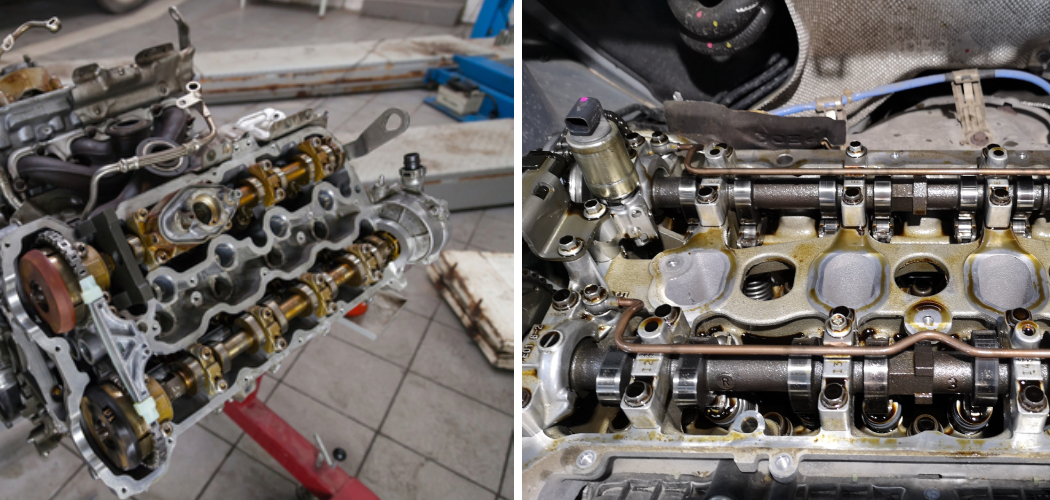Mazda’s innovative approach to improving fuel economy and reducing emissions comes in the form of cylinder deactivation technology. This advanced feature allows the engine to shut off some of its cylinders under certain conditions, such as during steady cruising, to save on fuel without compromising on performance.
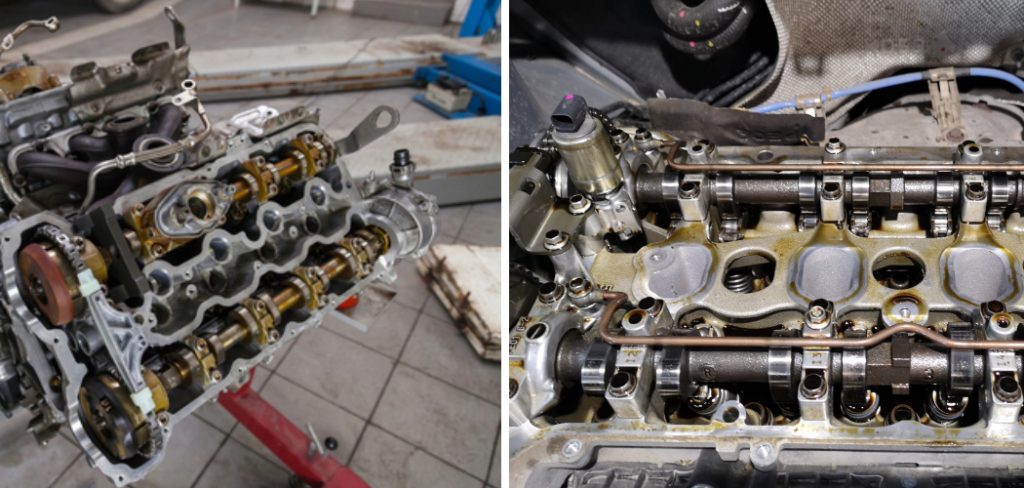
Knowing if your Mazda is equipped with this technology can be valuable in understanding your vehicle’s functionality and operation. In this blogpost on how to tell if mazda has cylinder deactivation, we will explore the signs and indicators that can help you determine whether your Mazda utilizes cylinder deactivation.
What is Cylinder Deactivation?
Cylinder deactivation is a fuel-saving technology that has been adopted by many automakers in recent years. It works by shutting down some of the engine’s cylinders when they are not needed, reducing the amount of work the engine has to do and, therefore, saving on fuel consumption.
This feature is typically activated during low-load conditions, such as when driving at a steady speed on the highway, where less power is needed from the engine. When the vehicle requires more power, such as during acceleration or going uphill, all cylinders are activated again to provide maximum performance.
Does My Mazda Have Cylinder Deactivation?
Not all Mazda models come equipped with cylinder deactivation technology. Currently, it is only available on select Mazda3 and Mazda6 models, specifically those with the Skyactiv-G 2.5-liter four-cylinder engine.

If your Mazda has this specific engine and was manufactured after 2018, it is highly likely that it has cylinder deactivation technology. You can also check your vehicle’s manual or contact your local Mazda dealership to confirm whether your Mazda is equipped with this feature.
Pros and Cons of Cylinder Deactivation
Like any technology, cylinder deactivation has its advantages and disadvantages. Given below are some of the pros and cons of this innovative feature:
Pros:
- Improved Fuel Efficiency, Especially During Highway Driving
- Reduced Emissions and Environmental Impact
Smooth Operation With Seamless Transitions Between Cylinder Activation and Deactivation
Cons:
- Potential for Increased Wear on Engine Components Due to Frequent Switching on and Off of Cylinders
- Limited Effectiveness in City or Stop-and-go Traffic Where the Engine is Constantly Required to Provide Power
- Not Available on All Mazda Models, Limiting Its Accessibility to Consumers.
- Can Add to the Overall Cost of the Vehicle.
- Some Drivers May Notice a Slight Decrease in Power and Performance While the Cylinders Are Deactivated.
10 Simple Step-by-step Instructions on How to Tell if Mazda Has Cylinder Deactivation
Step 1: Start Your Mazda and Let It Warm Up

Ensure that your vehicle has been running for at least a few minutes to allow the engine and transmission to reach their operating temperature. This will help in providing accurate readings during the following steps.
You can also start a stopwatch as soon as you begin the warm-up process to keep track of the time. The total time for warming up may vary depending on the outside temperature and other factors. It is recommended to wait for at least 10 minutes.
Step 2: Find a Safe Location to Perform the Test
Look for a clear stretch of road, preferably without any traffic, stop signs or signals. It’s important to have a safe and uninterrupted area to perform the test, as you will need to maintain a steady speed for a continuous period of time. The length of the test road should be at least 1/4 mile long so that you can easily make accurate observations without any interruptions.
You can also use a highway, as long as the traffic is light and you can maintain a steady speed. It is recommended to perform the test on a flat, straight and smooth road for accurate results. The road should also have good visibility so that you can easily monitor your vehicle’s performance.
Step 3: Check Your Mazda Model and Engine Type

Confirm that your Mazda model is one of the select models mentioned earlier, namely the Mazda3 or Mazda6, equipped with the Skyactiv-G 2.5-liter four-cylinder engine. If you’re unsure about your vehicle’s specifications, refer to your owner’s manual or contact your local dealership for assistance.
However, if you know for certain that your Mazda has a different engine type or was manufactured before 2018, then it is highly likely that it does not have cylinder deactivation technology.
Step 4: Reset Your Trip Odometer
Resetting your trip odometer will help you keep track of the distance traveled during the test. This information will be useful in calculating your vehicle’s fuel efficiency and determining whether cylinder deactivation was activated during the test.
It is recommended to reset the trip odometer after your vehicle has reached its operating temperature. The process for resetting the trip odometer may vary depending on your vehicle model, so refer to your owner’s manual for specific instructions.
Step 5: Accelerate Your Vehicle to a Steady Speed
Once you have reached the designated test location, accelerate your vehicle to a steady speed, preferably between 40-60 mph. Maintain this speed for the entire duration of the test. You can also use cruise control, if your vehicle has this feature, to ensure a constant speed without the need for constant acceleration or deceleration.
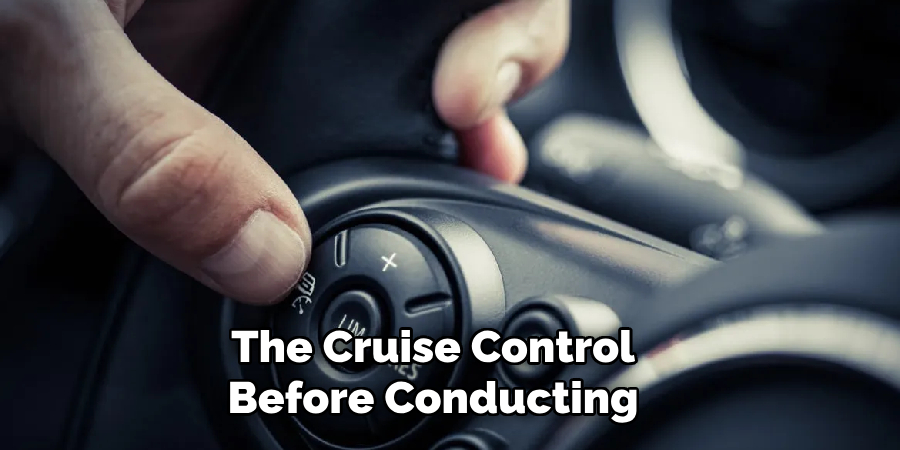
But make sure to turn off the cruise control before conducting the next step. If the test is performed on a highway, ensure that there are no inclines or declines and maintain a steady speed.
Step 6: Monitor Your Engine’s RPM
While maintaining a steady speed, monitor your engine’s RPM (revolutions per minute) on the tachometer. The tachometer is typically located near the speedometer on your vehicle’s dashboard and displays the engine’s RPM. This step will help you determine whether cylinder deactivation has been activated during the test.
But if you notice any significant changes in your engine’s RPM, it may indicate that cylinder deactivation is not present in your Mazda. Thoroughly observe and note any changes in the RPM throughout the test period.
Step 7: Check Your Fuel Efficiency
Once you have reached the end of your test road or distance, check your fuel efficiency on your trip odometer. The fuel efficiency should be higher than what is typically seen for your Mazda model during highway driving.
If there is a significant increase in fuel efficiency, it is highly likely that cylinder deactivation was activated during the test. However, if there is no noticeable difference in fuel efficiency, then it may indicate that your Mazda does not have this feature. If possible, repeat the test on a different road and compare the results.
Step 8: Observe Your Vehicle’s Performance

While conducting the test, also pay attention to your vehicle’s performance. If you notice an increase in engine noise or vibrations, it may indicate that your vehicle has switched to cylinder deactivation mode. Additionally, you may also experience a slight decrease in power and performance while the cylinders are deactivated.
Note down any observations in detail for future reference. The test drive should also be conducted on a normal day with average weather conditions, as extreme temperatures or road conditions may affect the results.
Step 9: Repeat the Process Regularly
It is recommended that you perform this test regularly to keep track of your Mazda’s cylinder deactivation function. The frequency of the test can vary depending on your driving habits and the number of miles you cover in a week. However, it is recommended to perform this test at least once every month to ensure that the feature is working properly and to detect any potential issues early on.
You can also conduct the test after any significant changes or maintenance on your vehicle, such as oil changes or engine updates. Regularly monitoring your vehicle’s performance and efficiency is important for maintaining its overall health and longevity.
Step 10: Understand the Benefits of Cylinder Deactivation
Cylinder deactivation technology has several benefits, including improved fuel efficiency, reduced emissions and increased engine lifespan. By shutting off half of the cylinders when they are not needed, the engine is able to conserve energy and operate more efficiently.
This results in lower fuel consumption and fewer emissions being released into the atmosphere. Additionally, by reducing the workload on the engine, cylinder deactivation can also extend the lifespan of your vehicle’s engine. It is a valuable feature that not only benefits your wallet but also the environment.
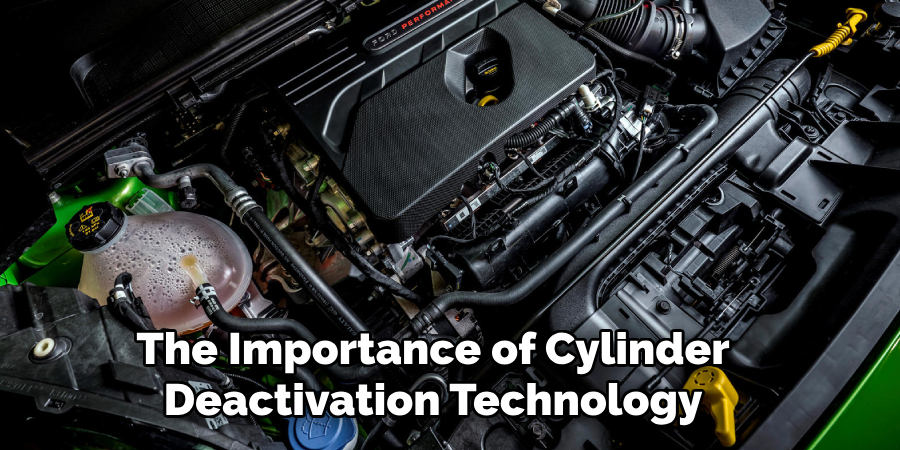
Following these steps on how to tell if mazda has cylinder deactivation and understanding the importance of cylinder deactivation technology can help you make the most out of your Mazda’s performance.
Regularly testing and monitoring this feature can ensure that it is working properly and enable you to take necessary action if any issues arise. So, happy testing and enjoy a more efficient and eco-friendly driving experience with your Mazda!
Maintenance and Reliability Considerations
As with any vehicle feature, it is important to understand the maintenance and reliability considerations of cylinder deactivation technology. Regularly checking and testing this feature can help detect any potential issues early on, but it is also recommended to follow your Mazda’s maintenance schedule for routine check-ups and servicing.
Additionally, extreme driving conditions or neglecting regular maintenance can also affect the longevity and performance of your vehicle’s cylinders and engine. It is always best to consult with a professional mechanic for any concerns or issues regarding your Mazda’s cylinder deactivation function.
Furthermore, the reliability of this feature may also vary depending on the age and mileage of your vehicle. Older vehicles or those with high mileage may not have the same efficiency and performance as newer models, so it is important to regularly check and maintain your vehicle regardless of its age.
With proper care and maintenance, cylinder deactivation technology can provide long-lasting benefits for your Mazda’s performance and efficiency.
Driving Experience with Cylinder Deactivation

Cylinder deactivation technology may slightly alter the driving experience for some Mazda owners. As mentioned earlier, there may be a slight decrease in power and performance while the cylinders are deactivated. This is because the engine is operating at a lower capacity, but this should not significantly affect your overall driving experience.
In fact, many drivers may not even notice the change in operation as it happens seamlessly and automatically. Some drivers have reported a smoother and quieter drive with cylinder deactivation activated, as the engine is not working as hard. Overall, it is a valuable feature that enhances your driving experience by providing improved fuel efficiency and reduced emissions.
Future Trends and Innovations
As technology and innovation continue to advance, it is possible that cylinder deactivation will become even more advanced and integrated into vehicles. Some manufacturers are exploring the use of three-cylinder engines with cylinder deactivation, further improving fuel efficiency. Others are experimenting with using this technology in hybrid vehicles to optimize engine performance and reduce emissions.
Additionally, there may be advancements in sensors and algorithms used to detect when to activate cylinder deactivation, resulting in even more efficient and seamless operation. It is an exciting time for automotive technology, and it will be interesting to see how cylinder deactivation evolves in the future.
Overall, understanding how to tell if your Mazda has cylinder deactivation and regularly testing and monitoring this feature can help you make the most out of your vehicle’s performance and contribute to a greener and more efficient driving experience. So, go ahead and take your Mazda for a spin to test out this innovative feature! Happy driving!
Do You Need to Get Support From a Professional?
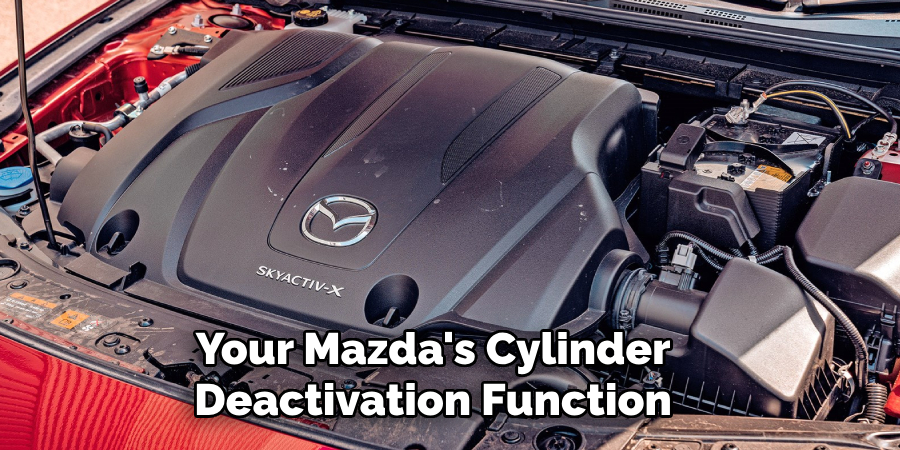
If you have any concerns or notice any issues with your Mazda’s cylinder deactivation function, it is always best to seek support from a professional mechanic. They can diagnose and address any potential problems and ensure that your vehicle is performing at its best.
Additionally, if you are unsure about testing or monitoring this feature on your own, a professional can provide guidance and assistance. It is important to prioritize safety and proper maintenance, so do not hesitate to seek professional support when needed. So, keep an eye out for any warning signs or abnormalities and consult with a professional if necessary for a smooth and efficient driving experience.
Frequently Asked Questions
Q: How Do I Know if My Mazda Has Cylinder Deactivation?
A: You can check your owner’s manual or contact your local Mazda dealership to confirm if you have this feature on your vehicle. Additionally, you can perform the test outlined in this guide to determine if your Mazda’s cylinders are deactivating properly.
Q: Can I Turn Off Cylinder Deactivation on My Mazda?
A: No, cylinder deactivation is an automatic feature that cannot be manually turned off. However, there may be circumstances where the system may temporarily deactivate, such as during hard acceleration or when the engine is operating at high temperatures. In these cases, the cylinders will automatically reactivate once conditions are back to normal.
Q: Will Cylinder Deactivation Affect My Mazda’s Power and Performance?
A: There may be a slight decrease in power and performance while the cylinders are deactivated, but this should not significantly affect your overall driving experience. In fact, many drivers may not even notice the change in operation as it happens seamlessly and automatically.
Q: Is Cylinder Deactivation Reliable?
A: With proper maintenance and regular testing, cylinder deactivation technology is a reliable feature that can provide long-lasting benefits for your Mazda’s performance and efficiency.
However, extreme driving conditions or neglecting regular maintenance can affect the reliability of this feature. It is always best to consult with a professional mechanic for any concerns or issues regarding your Mazda’s cylinder deactivation function.
Q: How Does Cylinder Deactivation Contribute to a Greener Driving Experience?
A: By only using the necessary number of cylinders, cylinder deactivation can reduce fuel consumption and emissions from your vehicle. This contributes to a greener driving experience and helps protect the environment.
Additionally, improved fuel efficiency also means less frequent trips to the gas station, resulting in a reduced carbon footprint overall. So, not only do you benefit from better performance and fuel efficiency, but you also contribute to a more sustainable future by utilizing cylinder deactivation technology in your Mazda. Keep up the good work!
Conclusion
In conclusion, Mazda’s cylinder deactivation technology is a remarkable stride toward efficiency and sustainability in automotive engineering. By being aware of the specific indications such as a quieter engine, improved fuel economy numbers, and the presence of an “ECO” light or similar notifications in your vehicle’s dashboard, you can ascertain whether your Mazda is equipped with this innovative feature.
Moreover, consulting your owner’s manual or reaching out to an authorized Mazda dealer will provide definitive confirmation. Understanding these aspects of your vehicle not only contributes to an informed driving experience but also helps you to take full advantage of the technological advancements embedded in your Mazda. Thanks for reading this article on how to tell if mazda has cylinder deactivation.

About
JeepFixes Team is a skilled author for Jeep Fixes, bringing 6 years of expertise in crafting a wide range of jeep fixes. With a strong background in jeep fixes work, JeepFixes Team’s knowledge spans various types of fixtures, from decorative pieces to functional hardware, blending precision with creativity. His passion for jeep fixes and design has made him a trusted resource in the industry.
Professional Focus:
Expert in Jeep Fixes : JeepFixes Team aesthetic specializes in creating durable and innovative jeep fixes, offering both appeal and functionality. His work reflects a deep understanding of jeep fixes techniques and materials.
Sustainability Advocate : He is dedicated to using sustainable practices, ensuring that every fixture is crafted with eco-friendly methods while maintaining high-quality standards.
In his writing for jeep fixes, JeepFixes Team provides valuable insights into the latest trends, techniques, and practical advice for those passionate about jeep fixes, whether they are professionals or DIY enthusiasts. His focus on combining artistry with engineering helps others discover the true potential of jeep in design.

